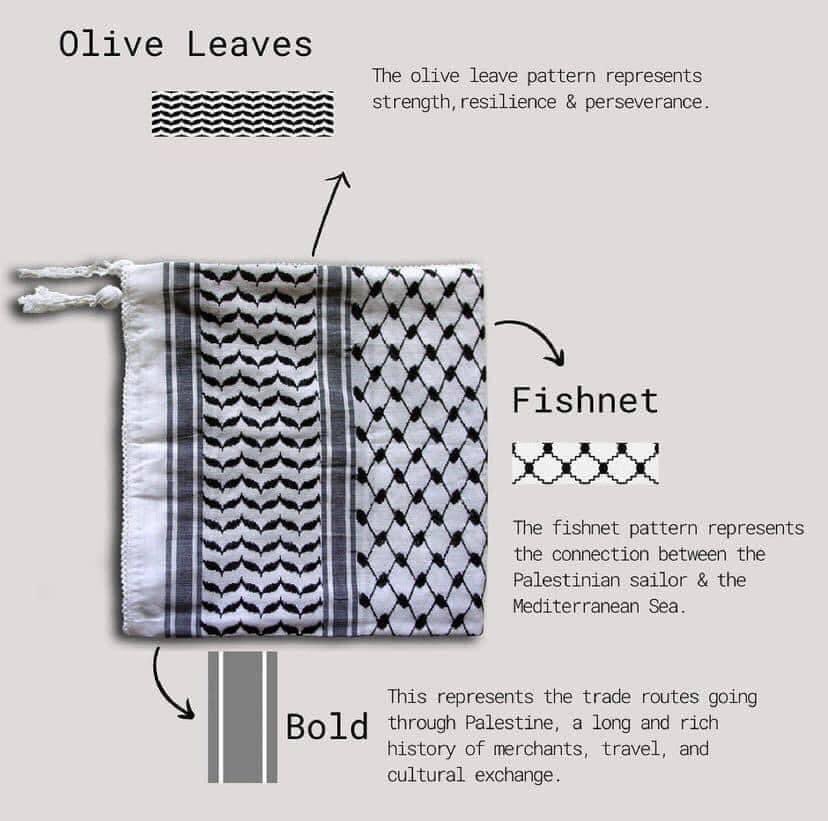About the Kofiyah or more referred to in english as Keffiyeh
The olive leave pattern represents strength, resilience & perseverance.
The fishnet pattern represents the connection between the Palestinian sailor & the Mediterranean Sea.
The bold pattern represents the trade routes going through Palestine, a long and rich history of merchants, travel and clutural exchange.
A Keffiyeh, also known as a shemagh or hattah, is a traditional square cotton scarf worn by individuals in the Middle East, typically draped over their heads. Available in various colors and patterns, each keffiyeh signifies a specific country or region. The iconic black and white keffiyeh with a comb and wing-shaped pattern is particularly associated with Palestine, serving as a symbol of unity and solidarity among the Palestinian people.
Jumping back to the 1936 Arab Revolt in Palestine, the British Mandate posed a threat to the lives and homes of native Palestinians, sparking widespread unrest. To evade arrest, Palestinian supporters utilized the keffiyeh to conceal their identities, wrapping it over their heads and faces. In response, British authorities banned the keffiyeh. However, this prohibition unexpectedly prompted all Palestinians to wear the keffiyeh in a concealing manner, making it nearly impossible to identify individuals. This marked the moment when the keffiyeh transformed into a powerful symbol of unity and solidarity for Palestinians. The symbolism of the keffiyeh only deepened as more conflicts unfolded over the years. Palestinian President Yassir Arafat further solidified the meaning of the keffiyeh by consistently wearing it in public.
مهما دمرتم .. فلن تدمروا ضحكتنا


…. ولّـــعت ….
نعم أشعلتم الأرض من تحتهم
خليهم يطبعوا أحسن ما ينحسبوا علينا زُلم
( لا سمح الله )


we have on this land all of that which makes life worth living for
على هذه الأرض ما يستحق الحياة
معلــــشششش
بينتقموا منا في الأولاد


Return is our right & our will

العودة حق وإرادة شعب
Watch Our Launching Video



